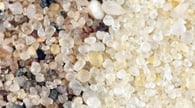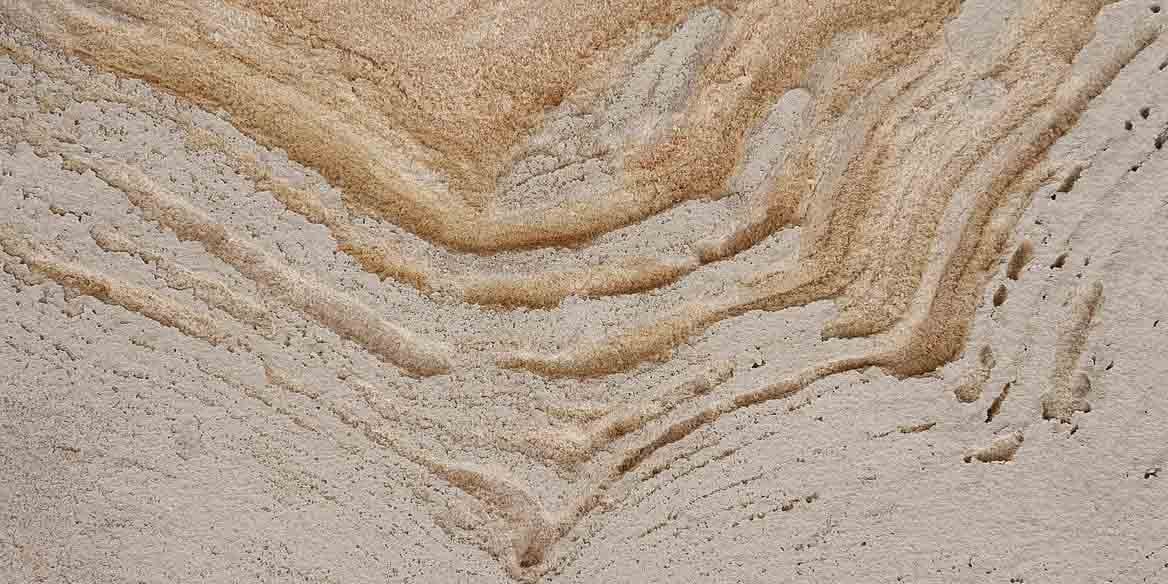How Much Do Oil and Gas Sand Control Screens Cost? (With Video)
The proper filtration of loose sediments, such as sand, is crucial when extracting oil. Engineers that control the filter media that goes into the oil reservoir must ensure that their sand control screen delivers desirable filtration and optimal flow rate.
As there are several sand control screen options on the market, the decision on which is implemented ultimately falls on its cost in relation to its sand control capabilities.
W.S. Tyler has been a leading supplier of filter wire mesh for over a century and has helped dozens of oil companies implement sufficient oil filtration while also saving money down the road.
In this article, we will go over the price of the most popular sand control options and analyze the factors that dictate their cost.
How Much Does a Premium Sand Control Screen Cost?
Premium screens are a two-part configuration of diffusion bonded filter mesh. Each screen will have both a filter layer, ranging from 60 to 300 micron, as well as a support layer.
That said, the cost of a premium sand control screen is on a per quote basis.
Factors such as the micron specification, alloy specification (typically 316-L or alloy/carpenter 20), and availability of the mesh layers play a key role in the overall cost of the screen. However, the labor expenses will be identical despite the specifications you go with.
With that, premium sand control screens with a small diameter are usually $70-$80 per foot, with larger screens reaching prices of $400 per foot.
It should be noted that additional tooling costs may apply to those who need a screen with specialty size parameters, such a custom valve fitting.
How Does Micron Rating Affect Cost?
The micron rating of filter mesh is a direct reflection of both the size of particles that are filtered out as well as the rate in which fluids and other material can flow through the mesh. Selecting a micron rating that is too large can cause unwanted particles to make their way through the filter while a micron rating that is too small can cause the filter to become clogged easily.
When it comes to its effect on the overall cost of a premium sand control screen, finer micron ratings tend to cost more as they require far more labor during the weaving process.
How Does Alloy Affect Cost?
As stated above, the alloy in which your premium sand control screen is made of is a key factor in its overall cost. Typically, premium sand control screens are made of either type 316 alloy or alloy/carpenter 20.
Type 316 basic 18-8 analysis stabilized that utilizes Molybdenum to increase its resistance to chemical corrosion. Alloy 20 is a nickel, iron, chromium-based alloy that utilizes niobium to increase its resistance to chemical corrosion.
Alloy 20 is the stronger of the two alloys and, naturally, is accompanied by a higher price tag than type 316 alloy.
How Much Do Other Sand Control Screens Cost?
There are three other sand control options to choose from: wire wrapped screen, prepacked screen, and slotted linear screen. It's important to understand each solution has its own distinguished qualities. 
For more information surrounding the pro and cons of all the sand control screens in this article, refer to Oil Well Sand Control Screens (Definition, Benefits, and Alternatives).
1. Wire Wrapped Screen
A wire-wrapped screen is made up of a core tube, which resembles a slotted liner screen, that is wrapped with durable wedge wire that has several keystone slot openings. That said there are two types of wire wrapped screens: slip-on and direct weld.
The slip-on form factor requires the wedge wire filter to be slid over the perforated inner tubing. On the other hand, the direct weld form factor requires the wedge wire filter medium to be welded directly onto the inner tubing.
Naturally, the direct weld requires more labor and can be expected to have more expenses, With that, the cost of a wire wrapped screen is around 50% cheaper than a high-quality, premium sand control screen.
2. Prepacked Screen
Prepacked screens involve two wire wrapped screens and a filter medium, which is typically some sort of gravel-based material. That said, forming a prepacked screen is extremely labor-intensive.
The two screens must be welded and wrapped, the filter medium needs to be placed between the screens, and weld the screens again once the filter medium is in place. When all is said and done, the price of a prepacked screen is only about 10% less than that of a premium sand control screen.
Knowing this, it should also be noted that while prepacked screens perform the same function as a premium sand control screen, a premium sand control screen tends to be more beneficial over time when you consider the tendency of prepacked screens to become plugged.
3. Slotted Liner Screen
A slotted liner screen is a tube made up of several pieces of sheet metal, which have slot holes punched out of them to carry out filtration, welded. However, these slot openings do not have the filtration accuracy that the other options have.
When in the market for a sand control screen, a lot of the cost of the more expensive price tags of the prepacked premium sand screen options reflects the screens ability to filter out sand. In other words, you’re getting what you pay for.
That said, the low filtration accuracy of a slotted liner screen makes it one of the cheapest sand control filters on the market and is roughly 70% cheaper than a premium sand control screen on average.
How Does Well Completion Affect Cost?
Something that also needs to be taken into consideration when selecting a sand control screen for your operation are the expenses associated with well completion. Currently, there are two ways to complete wells: standalone or gravel pack.
Standalone simply refers to placing a sand control screen, typically a premium sand control screen, in the well with no additional filtration mediums in place.
On the other hand, gravel pack is the act of placing a sand control screen, typically a wire wrapped screen, in the well then pumping sized gravel around the screen, providing an additional means of filtration. This is a fairly expensive process for oil companies.
While the initial cost of a premium sand control screen may be daunting, their ability to stand alone eliminates the need for a gravel pack, ultimately saving the oil company a substantial amount of money down the road.
Determine If a Premium Sand Control Screen Is Right for You
Implementing a filtration medium that allows you to extract clean oil that’s free of any sediments is key to running an efficient operation. Not only does it limit the amount of post extract processing, but it also extends the lifespan of your equipment.
If you are looking for an option that may not deliver the best filtration qualities but is budget-friendly, then the slotted liner screen will be a good fit.
If you are looking for a middle of the road option with a balanced level of cost and filtration capabilities, a wire wrapped screen may work best.
For those looking for premium filtration but want to save as much money as possible, prepacked screens provide the same functionality as premium sand control screens at a slightly cheaper cost.
However, if you are looking for the best possible option that continuously delivers optimal filtration, reach out to our team of experts.
While a premium sand control screen may have a higher initial price than the other options, it is one of the only sand control screens that was designed to stand alone. This means oil companies must spend more time and money packing the reservoir with gravel to ensure adequate filtration is achieved.
With over 140 years of woven wire filter mesh experience, W.S. Tyler is here to help ensure you have the knowledge needed to determine the right sand control screen for your operation.
For more information about filtration mesh solutions, refer to our Woven Wire, Fabricated Parts, and Customized Filters Brochure.
Want all the latest industry trends and innovations sent directly to your inbox? Subscribe to our monthly newsletters today.
About Ronnie Brown
Ronnie is the Content Writer for W.S. Tyler and has four years of experience as a professional writer. He strives to expand his knowledge on all things particle analysis and woven wire mesh to leverage his exceptional writing and graphic design skills, creating a one-of-a-kind experience for customers.



